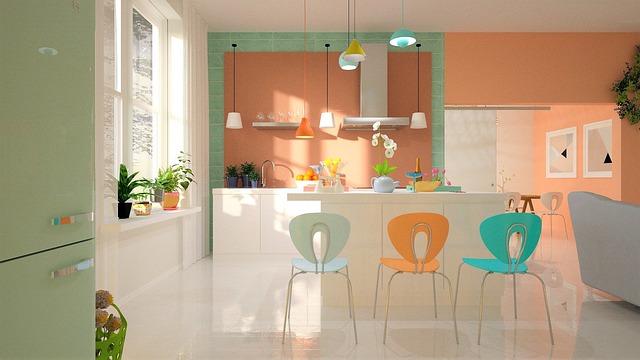Termites are among the most destructive pests that can invade a home, causing significant damage to its structure and potentially leading to costly repairs. As a homeowner, taking the necessary steps to protect your property from these unwanted invaders is essential. In this article, we’ll explore various safe and efficient termite treatments and practical tips for preventing future infestations. By following these guidelines, you can ensure your home remains a fortress against termites and other destructive pests.
Table of Contents
Understanding Termites: Why They Pose a Threat
Before delving into termite treatment options, it’s crucial to understand why these tiny insects pose such a significant threat to our homes. Termites feed on cellulose, a primary component of wood, and can silently cause extensive damage to a home’s structure over time. They are social insects living in large colonies that can comprise thousands or even millions of individuals. This makes it vital for homeowners to act promptly when faced with a termite infestation, as even a small delay can lead to substantial damage.
Termite Treatment Options: The Fundamentals
There are several termite treatment methods available, each with its advantages and drawbacks. The most appropriate approach will depend on the nature and severity of the infestation, as well as the specific needs of your home. Below, we outline some of the most common termite treatment options and their respective benefits.
Liquid Termiticides:
Liquid termiticides are one of the most popular and effective methods of termite treatment. These chemicals are applied to the soil around your home’s foundation, creating a barrier that prevents termites from entering the structure. Some liquid termiticides also have a delayed lethal effect, allowing termites to transfer the chemical to other members of the colony, which can eventually lead to the entire colony’s demise.
Pros:
- Provides a long-lasting barrier against termites
- Can effectively eliminate an entire colony
Cons:
- May require significant disruption to the soil around your home
- Not recommended for homes with a high water table or nearby wells
Baiting Systems:
Baiting systems are another popular termite treatment option. These systems involve placing bait stations in strategic locations around your home, which contain wood or cellulose material treated with a slow-acting toxicant. Termites are attracted to the bait and carry it back to their colony, where it is shared with other members, eventually leading to the colony’s collapse.
Pros:
- Environmentally friendly, as the toxicant is contained within the bait stations
- Minimal disruption to your property
Cons:
- May take longer to achieve colony elimination than liquid termiticides
- Requires ongoing monitoring and maintenance
Borate Treatments:
Borate treatments involve applying a borate-based solution directly to wood surfaces in your home, such as exposed beams or framing. The termites consume the treated wood, which then interferes with their ability to digest cellulose, ultimately leading to their death.
Pros:
- Offers long-lasting protection for treated wood
- Can be applied during construction as a preventive measure
Cons:
- Not effective against existing infestations in inaccessible areas
- May not protect untreated wood in your home
Heat Treatment:
Heat treatment is a non-chemical termite treatment method that involves raising the temperature in the infested area to a level that is lethal to termites. This can be achieved using specialized equipment, such as heaters and fans, which are strategically placed to ensure even heat distribution.
Pros:
- Chemical-free and environmentally friendly
- Effective for treating localized infestations
Cons:
- Not suitable for large-scale infestations or homes with extensive damage
- It may be costly and require professional assistance
Preventing Future Termite Infestations: Proactive Measures
Once you’ve successfully treated a termite infestation, it’s essential to take proactive measures to prevent future invasions. Here are some practical tips to help you keep your home termite-free:
Maintain Proper Drainage:
Excess moisture around your home’s foundation can attract termites and create a conducive environment for their survival. Ensure your property has a proper drainage system, and regularly clean gutters and downspouts to prevent water buildup.
Eliminate Wood-to-Ground Contact:
Termites can easily access your home if wooden structures, such as porches or decks, are in direct contact with the ground. Use concrete or steel supports to raise wooden structures off the ground and keep termites at bay.
Regularly Inspect Your Home:
Conduct regular inspections of your home’s interior and exterior, looking for signs of termite activity, such as mud tubes, damaged wood, or discarded wings. Early detection is key to preventing extensive damage.
Store Firewood Away from Your Home:
Firewood can be a magnet for termites, so store it at least 20 feet away from your home and off the ground. This will reduce the likelihood of termites finding their way into your home.
Seal Cracks and Openings:
Seal any cracks or openings around your home’s foundation, as these can serve as entry points for termites. Regularly inspect your home’s exterior for any new gaps or cracks and address them promptly.
Schedule Regular Termite Inspections:
Hiring a professional to conduct regular termite inspections can help you detect and address potential problems before they escalate. Most experts recommend having your home inspected for termites every 1-2 years, depending on your region and the prevalence of termites in your area.
Conclusion:
Termites can cause significant damage to your home if left unchecked, but with the right treatment methods and proactive prevention measures, you can keep these unwanted invaders at bay. Remember that early detection and intervention are crucial in minimizing the impact of termites on your home. By employing safe and efficient termite treatments, you can secure your home and maintain its structural integrity for years to come.
Read More


